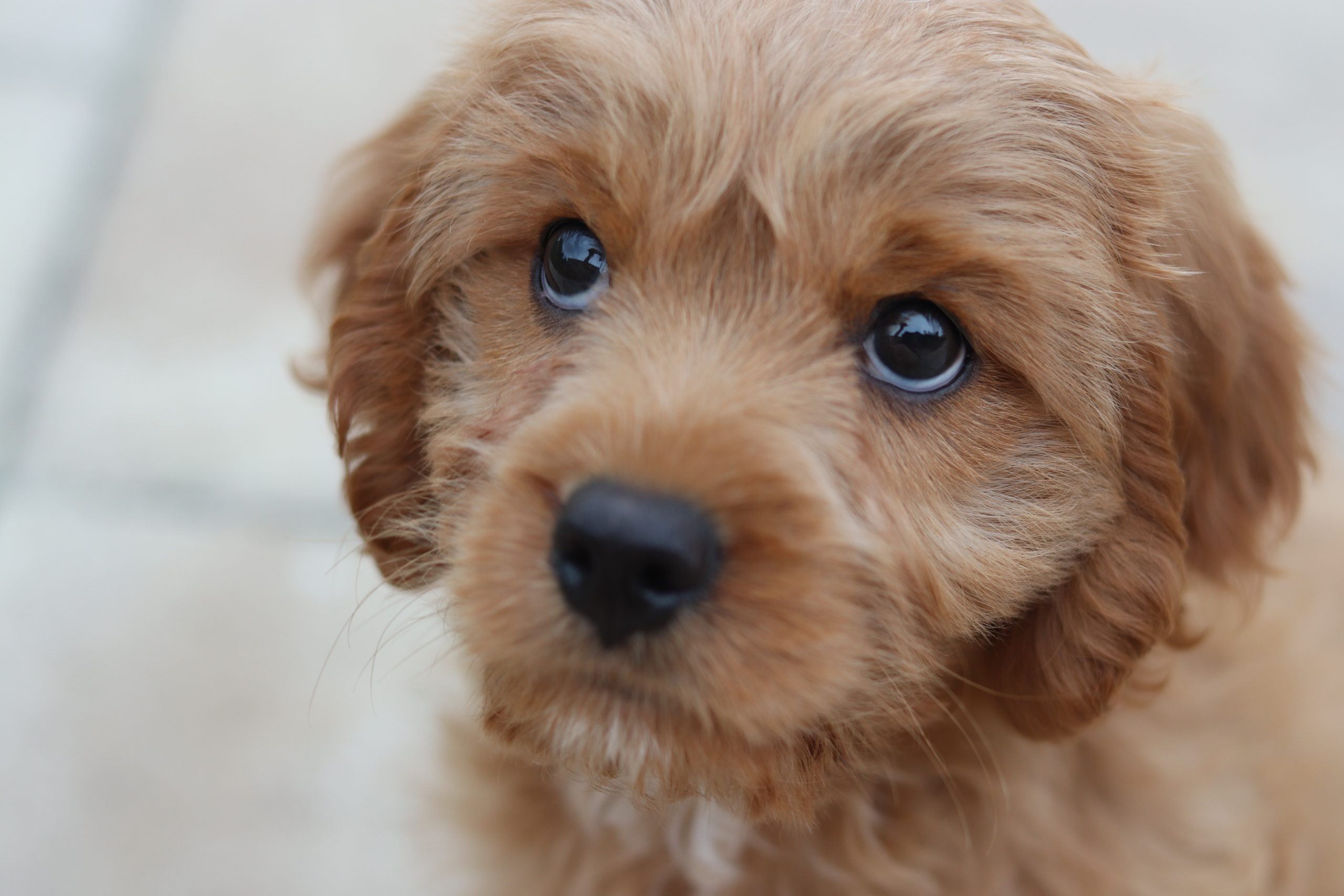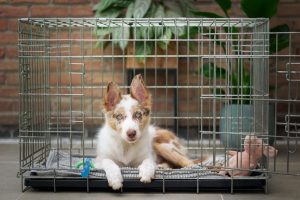Mastering Puppy Training: A Guide to the 3 Most Common Issues
Bringing a new puppy into your life is an exciting and joyous experience. Those wagging tails and boundless energy can quickly become the heart of your home. However, along with all of the cuddles and playtime, comes the responsibility of training your furry companion. A well-trained puppy not only makes for a happier household, but also ensures a safe and harmonious environment for both your pet and your family.
In this guide, we will dive into 3 fundamentals of puppy training, covering the most common questions and issues that we receive every day. Whether you’re a first-time pet owner or looking to refresh your training techniques, this blog will equip you with the knowledge and tools needs to get started raising a well-mannered and happy pup. So, let’s embark on this journey together and set the stage for a lifetime of companionship with your four-legged friend.
1. Potty Training Fundamentals
One of the most common requests that we receive from clients is help with potty training. Whether you are adding a new puppy to your home or have adopted an older dog that is not fully trained, tackling the potty training is an important first step. Consistency and patience are key, and the more structure that is provided to your pup, the sooner you will have success with potty training. Establish a regular feeding schedule, which in turn will regulate their bathroom breaks. Take your pup outside frequently, especially after meals, before playtime, and immediately after waking up. Use a designated spot in your yard, and use the same word or phrase, such as “Go Potty” to prevent distractions from derailing your efforts. When your puppy goes in that spot, use the phrase as praise, and a treat can be given to reinforce the behavior.
Accidents indoors are inevitable when you’re beginning, but should never happen when the dog is unsupervised. That means if you are finding a puddle or pile after the fact, then that is a key indicator that your puppy has too much freedom. When potty training, your puppy should never be out of your line of vision, so that if you see him start to go inside the house, you can quickly correct and take him outside. You can use your key phrase in a stern corrective voice. As the puppy learns this phrase, he will begin to understand when it is used in a happy way and in a corrective way. You don’t want to harshly punish your puppy; however, it is okay to express that you are not happy by the tone of your voice when he goes inside. When you cannot supervise your puppy fully, it will be imperative to use a crate to keep him safe and to prevent unsupervised accidents from occurring. As your puppy becomes more reliable with going outside, then the level of freedom can also gradually increase.
2. Crate Training Essentials
Crate training is a valuable tool in nurturing a well-adjusted and contented puppy. While it may seem counterintuitive, a crate can provide a safe and comforting space for your furry friend. Although a lot of clients will balk at using a crate, it will be a key part of a successful housebreaking strategy, not to mention that it can prevent destructive behavior, reducing anxiety, and facilitating travel. First and foremost, a crate provides a safe place for your puppy when you cannot fully supervise him. In the same way that you would never leave a human baby alone without the confines of a crib or play pen, a new puppy cannot be left alone either. A puppy chewing up household items can quickly become an expensive problem, but an emergency surgery to remove a foreign body from your puppy’s digestive system is oftentimes more expensive and life threatening.
The primary virtue of crate training is patience. It is not uncommon for puppies to throw a tantrum upon being placed in a crate for the first few times. The key to success is that the door to the crate never opens when barking and whining is occurring. If the door opens during a puppy tantrum, then he will immediately learn that a tantrum results in getting out of the crate, and so the behavior will be repeated each time he is put in the crate and will intensify each time. That means that you need to take some steps to prepare yourself for the crate training experience. First, I would recommend choosing the time for crate training carefully. I do not recommend beginning it at bedtime. When a howling puppy at 2 AM, is disrupting the sleep of your family, it will be much more difficult to stick to it. Conversely, begin with short stints in the crate throughout the day. Having a puppy that has been adequately exercised and is tired upon beginning crate training will also help to set yourself up for success. I would recommend beginning with a walk and some play time, so that your tired puppy will have less energy by which to bark persistently.
Do not put any type of bedding or pads in the crate, especially when potty training. For young puppies and older dogs that are prone to chewing, bedding can present a dangerous hazard. For pups that are not fully potty trained, any material that can absorb urine will sabotage your efforts to teach your pup to hold it in the crate. It is not typical behavior for a puppy to go potty in their crate, so if you are having this issue, remove anything that can absorb urine, and make sure that the size of the crate is just big enough for the puppy to turn around and lay down. You also don’t want your pup to be able to urinate in one corner of the crate and lay in another corner. A well sized crate will help to teach your puppy to hold it. Bedding and crate pads can be introduced once your puppy is fully potty trained, and only after you are certain that there is no risk that bedding would be chewed or ingested by your pup. Lastly, when your pup is quiet, you can calmly open the door and give a lot of praise. Try to keep your crate time on a schedule so that your pup can anticipate the routine of being in his crate daily.
3. Preventing Separation Anxiety
Anxiety disorders in dogs, particularly separation anxiety, have been increasing exponentially since COVID lockdowns in 2020. We now have an entire generation of puppies that were not taught how to cope with being left alone simply because we rarely left our homes over a 2 year period. Post-COVID, the increase in people working from home has perpetuated this problem. We are seeing an alarming number of dogs on pharmaceuticals for anxiety and mental health disorders. Although pharmaceutical treatment does have a place for some pups, most incidents of separation anxiety and general anxiety can be prevented when the humans establish routine and structure from the beginning. It is critical to set your puppy up for success to be able to cope with the realities of life, including being left alone from time to time.
Begin by gradually acclimating your pup to alone time, starting with short intervals and gradually expanding them over time. Even when you are at home or working from home, let your pup spend some of that time in their crate in another part of the house so that they don’t develop an unhealthy dependency on being with you around the clock. If you are at home most days you will need to be more intentional about setting up alone time for your puppy. Establish a consistent routine to provide a sense of predictability and security. The routine of going into the crate, departures from the house, and arrivals back at home should be kept low key and calm without creating a lot of unnecessary excitement. As much as possible, have exercise and play time before crate time, so that your pup is tired and more likely to rest when alone. Just like in humans, exercise can reduce anxiety, so a pup that received structured exercise and mental stimulation is less likely to be anxious.
If your dog is already suffering with separation anxiety, or if signs of anxiety persist seek professional guidance. Just like with humans, anxiety disorders can vary in terms of severity and how they manifest in your pup. An obedience training program, along with guidance from your veterinarian, can give you tools to build confidence, establish structure, and keep your pup emotionally happy and healthy throughout his lifetime.
If you need additional help with any of the training basics outlined above, highly rated professional dog trainers such Off Leash K9 Training of Pittsburgh can help. Our trainers are experienced in obedience training as well as working through behavioral modification plans. For pups that are under 5 months of age, we offer a private Puppy Consultation that can be tailored to address your specific puppy training needs. For pups that are 5 months old or older, we have a comprehensive private lesson training program that encompasses basic manners as well as real-world distraction work to help build confidence in your dog. The 8 lesson program helps to give you and your dog the tools and skills to handle any situation that may come your way. If your time is limited, or you would like to get started quickly, we also offer a Board & Train program in which your dog would live with one of our trainers for 1or 2 weeks, and then return to you with the skills and obedience groundwork that you will need for a well-balanced pup. Contact us to discuss your pup’s specific situation and get a plan for your next steps to success!




